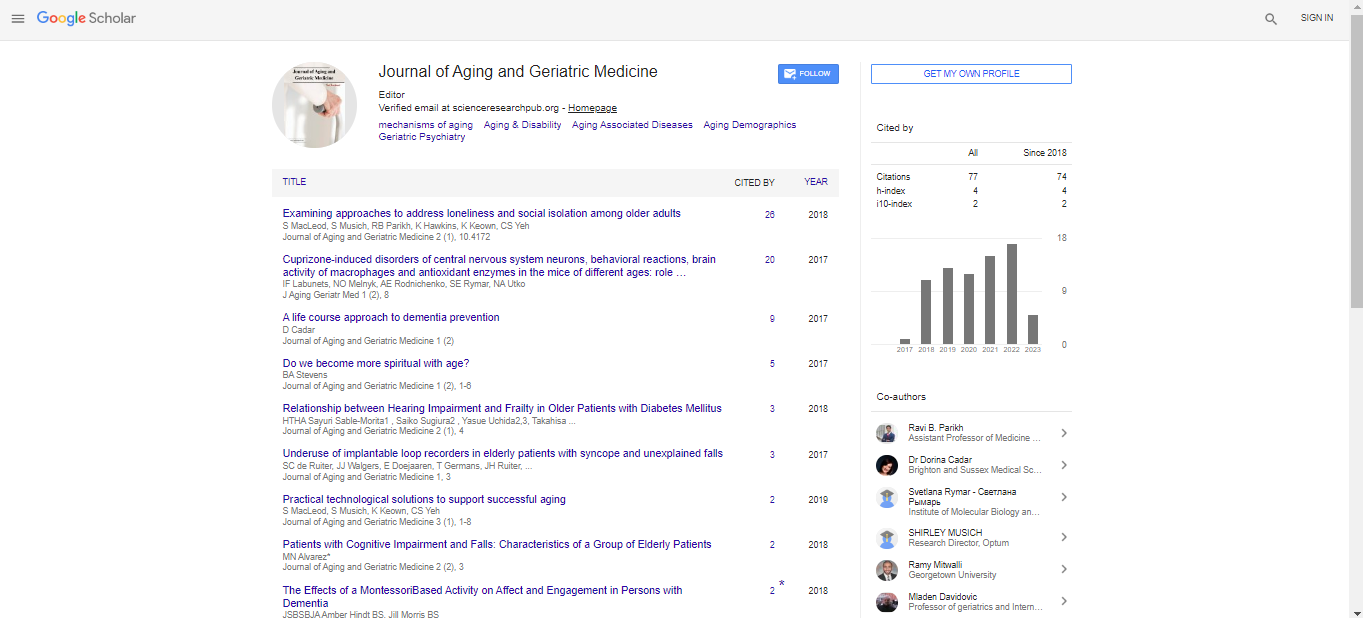The utility of mindfulness in the prevention of falls
Peter Hoang, Kim Moore and Matthew Kwan
McMaster University, Canada
: J Aging Geriatr Med
Abstract
Objective: Falls are a leading cause of injuries among older adults, however few studies have targeted intrinsic factors such as awareness in decreasing falls risk.1 Mindfulness is defined as focused attention in the present moment.2,3 The purpose of our study was to determine the feasibility and utility of mindfulness in the prevention of falls. Methods: In this quasi-experimental design, we enrolled 22 participants from two retirement homes in Niagara Region, Ontario, who were partaking in the Niagara LHIN Falls Prevention class. Participants were assigned to an eight-week intervention with verbal cues, body scan, and walking exercises developed from Kabat-Zinn’s protocol (mindfulness group), or received only the Falls prevention class (control group). These classes were delivered by physiotherapists. The primary outcome was the Tinetti Balance and Gait scale, and the Timed Up and Go test.4,5 Results: Experimental and control groups showed significant differences in gait (p = 0.036) and TUG scores (p = 0.000) at baseline, with the intervention group demonstrating poorer baseline scores. There was no significant effect of mindfulness on TUG (p = 0.476) or balance scores (p = 0.987), however there was a significant interaction effect of mindfulness on gait (p = 0.005). Conclusion: Our study showed a significant protective effect on gait, with the experimental group demonstrating less deterioration in gait over time. There was no difference in TUG or balance. This may suggest a preferential effect of mindfulness on dynamic processes such as gait over more static assessments of balance or strength.
Biography
E-mail: peter.hoang@medportal.ca
 Spanish
Spanish  Chinese
Chinese  Russian
Russian  German
German  French
French  Japanese
Japanese  Portuguese
Portuguese  Hindi
Hindi 